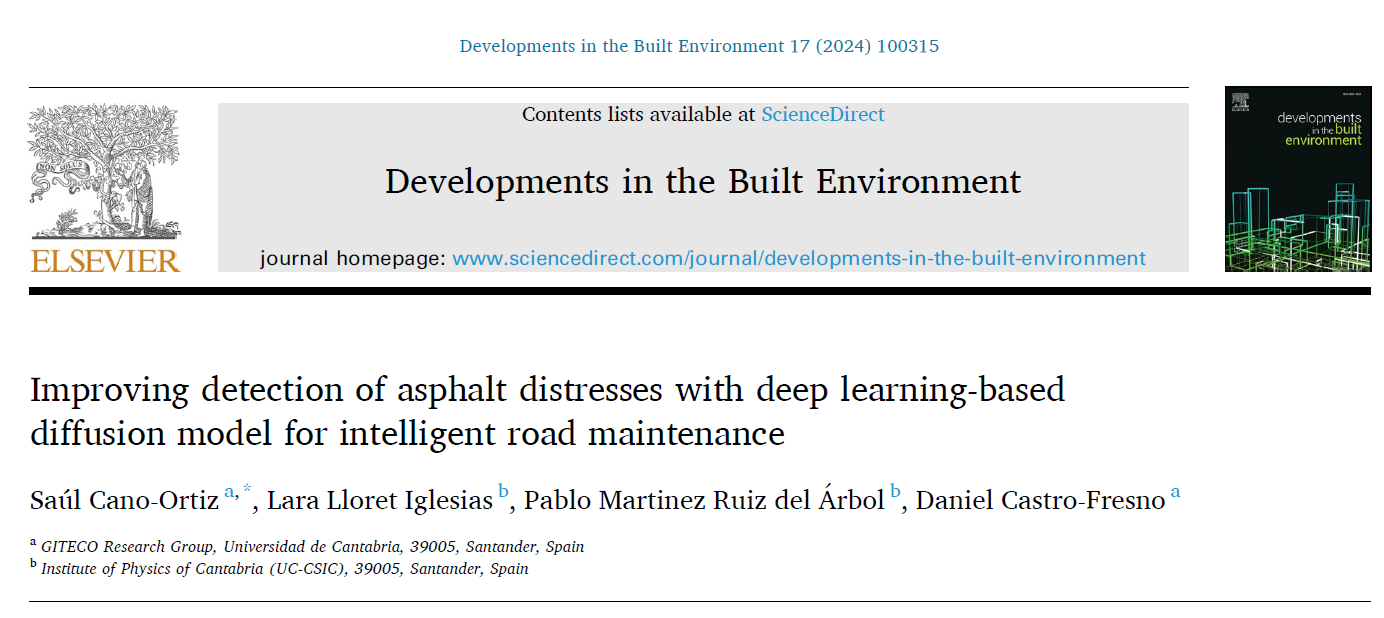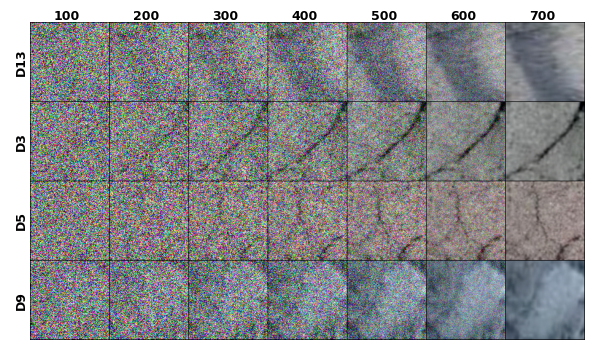MAPSIA presents innovative pavement technology at Data Science for Pavement Symposium 2023
Publication Date: 10 January 2024

Interested in the latest research shaping the field of intelligent road maintenance? What implications could a deep learning-based diffusion model have on future studies in infrastructure maintenance? What is a diffusion model?
The MAPSIA dream team has published a ground-breaking paper titled Improving Detection of Asphalt Distresses with Deep Learning-Based Diffusion Model for Intelligent Road Maintenance in the prestigious journal Developments in the Built Environment.
Revolutionizing the landscape of intelligent road maintenance, our team has developed a novel generative model to create realistic images of under-represented road distresses. This innovative system enables to significantly enhance the detection capabilities of our deep learning-based object detection model, paving the way for low-cost, high-efficiency, and robust maintenance strategies.
Imagine our roads as canvases, each one telling a story of wear and tear. The tale of these surfaces is crucial, and keeping a close eye on their health is even more critical. Traditional methods of checking road conditions involve a human touch, a visual inspection that is both time-consuming and demands a hefty amount of labour.
But what if we could give this process an artistic upgrade?
Enter the world of Deep Learning-based computer vision systems – our high-tech artists for road maintenance. While these systems show immense promise, they face challenges like a scarcity of labelled data, high annotation costs that do not quite align with engineering needs, and a limited understanding of less common defects.
Now, picture a breakthrough – a novel generative diffusion model. It is like an innovative artist armed with a digital palette, creating synthetic images of those rare, hard-to-find road defects. This not only addresses the data scarcity issue but also dives into enhancing image quality and reducing production time. It is like our artistic genius finding new ways to paint the road story more efficiently.
Comparing this to other techniques, especially Generative Adversarial Networks, our optimal configuration stands out in terms of reliability, quality, and diversity. It is as if we have found the perfect blend of colours to represent the road conditions accurately.
Now, here comes the exciting part. These synthetic images are not just for show; they play a crucial role in training our pavement distress detector, YOLOv5. And guess what? The mean average precision of our detector gets a significant boost. It is like giving our computer-aided system a pair of intelligent glasses, making it not only see better but also label road distresses with exceptional efficiency.
So, what does this all mean for us? Intelligent road maintenance and repairs. By infusing our system with these synthetic images, we have elevated its ability to recognize and label road issues. It's like having an artistic touch in the world of infrastructure – making our roads not just surfaces, but dynamic canvases that tell a story of innovation and efficiency.
Here is how the images are generated with our generative model. For more information, you can read the article in detail at doi.org

Explore the cutting-edge in road maintenance with MAPSIA! Read our paper on pavement distress detection through diffusion for a glimpse into the future of intelligent infrastructure. Citation and sharing appreciated!
If you want to learn more about MAPSIA's technology or collaborate with us, please contact us at.
ReturnWHAT ARE YOU FOR?
Our solution allows you to make better decisions to increase the life cycle of the road, reduce maintenance costs, improve user safety and reduce the environmental impact of corrective maintenance.
Contact with MAPSIA